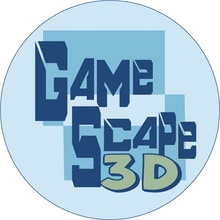Extrusion Width and Your Girth

What is printer resolution?
Extrusion Width and Layer Height = Resolution. If you want higher resolution, use smaller values. If you want lower resolution, use higher values. These settings will not fix extrusion problems. These settings are for quality of resolution only
Extrusion Width Is just like Layer Height, accept it only deals with width and not height. Extrusion Width only tells your printer how wide to make a line. This will have not other affect except for print speed as a wider line means more plastic per mm. The wider you extrude the slower you need to print. For example, if you print a .5 mm line at 60 mm/s. and now you want to print at 1.00 mm width. As a result you need to slow your speed down to 30 mm/s as have you doubled the amount of plastic coming out of the nozzle. Your extrusion width should always be at least 1.2 times a larger value than your Layer Height. By making the width bigger than your height, the lines are mashed together and thus resulting in better adhesion.
Extrusion Width – There are only two options here.
Auto Width: Takes your current nozzle setting and multiplies it by 1.2. There is not advance algorithm here, just a simple 1.2 * nozzle diameter. This sets the width of plastic printed for your model to be .48 mm for a .40 mm nozzle, or a .60 mm for a .50 mm nozzle, or 1.2mm for a 1.0mm nozzle, etc. That’s all this setting do, it only affects the width of plastic being extruded.
Manual Width: is the setting I always use. I never use the auto feature. I almost always use .5 mm or 1.00 mm. This will depend on what I am printing. Your prints will get better results when your model dimensions line up with your printer dimensions. To emphasis: If you set your extrusion width at .48 mm and your model is 1 mm thick. you will not be to have a true 1 mm width. Your slicer will try to compensate this but it really can’t You will either have a thickness of 0.96 mm or 1.44 mm. As .48 does not go into 1.00 and will be difficult to print.
Now we have and understanding of what Extrusion Width is, lets talk about your Layer Height.
Layer Height and Your Thickness
Layer Height: is exactly what it sounds like. It’s the height of layers on top of each other in measured in the thickness of mm. Usually this height is measured in microns. “What in the metric is a micron?” One Micro = 0.001 mm. We will just be using standard mm. The thicker the layer, the lower the resolution. The thinner the line, the higher the resolution. BUT there is a catch. The thicker the layers, the faster the print, and the lower the resolution. The thinner the layers, the slower the print, but higher resolution. Therefore this will always vary based on what you are looking for on that particular print. More detail = thinner layers. Less Detail = thicker layers. I used Marvin created by 3Dhubs to demonstrate the layer height.
There are a lot of settings in your slicing software. If you are not adjusting the correct settings you may never get the quality you are looking for.
While your here also check out our preview of the PrintSYSt beta web slicer!
Also, don’t forget to check out any 3D printing Software Deals that we have found!
The post Extrusion Width & Layer Height: Why Girth & Thickness Matter! appeared first on Inov3D.


